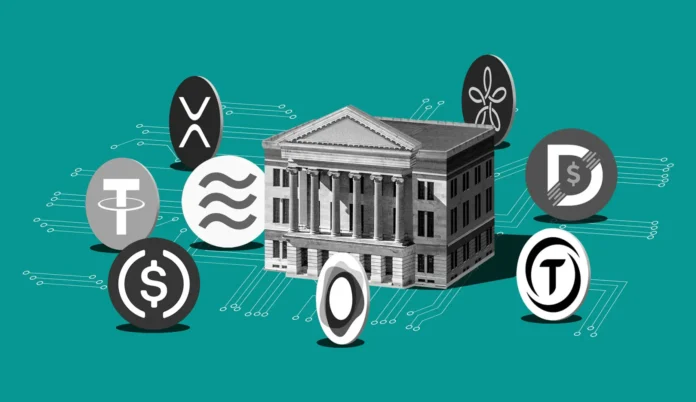In 2025 you can use digital currencies to pay for a wide array of products and services – from flight tickets to clothing items, digital art, and even coffee. Starbucks, Google, and Microsoft are only some of the brands that adopted crypto payments, but the list is expanding daily. And if it is to trust the news, the current bear market hasn’t managed to halt the adoption of crypto payments in e-commerce.
In 2009 Satoshi Nakamoto published a White Paper containing the basics for a peer-to-peer cash system. It soon became the phenomenon everyone knows nowadays as Bitcoin, which triggered the introduction of altcoins like Ethereum to compensate for Bitcoin’s limitations. Today it’s common for investors to check the Bitcoin or eth price usd before paying for services or products to decide whether to use digital or fiat money.
Cryptocurrencies have become a popular part of the investment landscape, and e-commerce retailers stand to benefit from using them as payment methods.

Why are retailers hyped about using crypto payments?
The increasing popularity and acceptance of digital currencies over the last few years have made enterprises around the world consider integrating alternative assets as payment methods. Mastercard announced that it intends to add digital currencies into its network and has promoted NFTs and other similar digital payments.
Other well-known brands like Tesla also toyed with the idea of accepting crypto payments, which caused the democratization of digital currencies and put them top of mind for buyers. Blockchain and implicit cryptocurrencies put security first, which is a feature meant to complement the e-commerce sector, where customers are always concerned about their data security.
Cryptocurrency has entered the mainstream
Cryptocurrencies were developed to serve as a digital form of currency and rely on blockchain technology (a distributed ledger) to process transactions. If, in the beginning, they were at the fringes of the financial sector, they have moved from there over the last few years as investors have started to list them among the assets worth to be added to portfolios. Also, retailers have been integrating them among other payment methods, causing the public to see them as a reliable asset to use.
The real estate industry has been one of the first adopters of digital currencies. Several luxury properties have been sold for digital currencies – the largest digital transaction was in 2019 for a high-end condo in Miami. Real estate investors prefer cryptocurrencies because they are decentralized, with low to no fees, and enable fast transactions.
Until a couple of years ago, cryptocurrencies haven’t been viewed as viable payment means for daily purchases. People couldn’t also ignore their volatility. But let’s remember that their volatility has propelled them among the hottest alternative assets and convinced investors to add them to their portfolios. The rise of stablecoins has made it possible even for individuals to use cryptocurrencies as payment methods, as they no longer have to worry about value fluctuations.
As digital currencies gain more popularity among young generations, retailers addressing Gen Z and Millennials are considering accepting cryptocurrencies to keep up with the trends affecting their audiences. When a customer base is primarily Gen Z, integrating digital currency payments is paramount because it’s the keenest adopter of Internet-based money. According to statistics, 54% of crypto users are Generation Z.
Several retailers accept a form of cryptocurrency in their online or offline stores: Microsoft, Starbucks, Home Depot, Whole Foods, GameStop, and Newegg.

Digital currency payments bring a series of benefits to retailers
If it were to compare digital currencies to traditional payment methods like card payments and bank transfers, the first ones would provide retailers with several benefits. Retailers can lower their costs when processing cryptocurrency transactions at 1% per transaction, while they would have to pay from 2,8% to 4.3% if they’d use conventional payment methods. Also, digital currencies arrive near instantly in their accounts, so they can use the resources for other purposes.
In addition, cryptocurrency transactions are secured by blockchain and executed via a decentralized ecosystem of validators. Blockchain technology is considered among the highest secure technologies of the moment, an advantage retailers cannot ignore.
As a side note, merchants listed friendly fraud and chargebacks among the main challenges they experience in the sales sector. Therefore, knowing blockchain technology could protect them from such instances motivates them to integrate digital currencies among their other payment methods.
Moreover, cryptocurrency payments have no geographical restrictions or surcharges for cross-border transactions, so companies can use them to expand their reach, access new sales opportunities, and scale their operations.
Cryptocurrency payments come with some obstacles
Despite the several advantages crypto payments bring to merchants, they also have their downsides, and it’s important to highlight them because they could hinder their adoption in the ecommerce space. We already mentioned the first one: their increased volatility could turn the entire process into a nightmare because their value could drop overnight, causing a business to break. However, the sector took the initiative to solve this issue by introducing stablecoins, digital currencies tethered to the value of a traditional asset.
Another obstacle crypto payments deal with is the need for more trust in some big brands and well-known personalities in the sector. For example, Apple has banned digital currency wallets at first, but it softened its position later, stating that it would reconsider its position as the market evolves. Amazon also announced that it will stay clear of digital currency payments for now, even if it uses Bitcoin-related cloud patents.

Final words
Crypto payments adoption is still in its infancy. Only a small number of merchants accept digital money online, and even a smaller number of retailers have in-store crypto payment solutions. However, if the market overcomes the present winter, the adoption of digital currencies, among other payment methods, could grow rapidly in the following years.
The pandemic accelerated digital adoption, and companies are open to using new technologies, so blockchain and cryptocurrencies could be among them.









